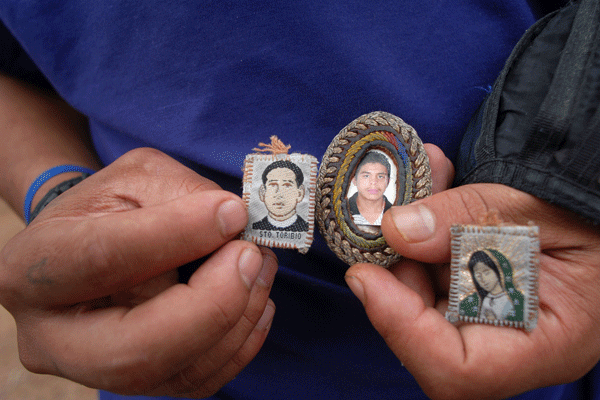
SANTA ANA DE GUADALUPE, Mexico (CNS) — The road signs leading to this hamlet of 292 souls in the dry highlands northeast of Guadalajara read “Santo Toribio Romo.”
The hamlet’s proper name, Santa Ana de Guadalupe, is seldom spotted — perhaps because of the popular appeal of its native son, St. Toribio Romo Gonzalez, patron saint of migrants and the most famous of the canonized 25 martyrs of the 1920s Cristero Rebellion.
“None of the saints was especially well-known,” says Father Antonio Gutierrez, spokesman for the Archdiocese of Guadalajara.
But with time, St. Toribio became known throughout the region and in migrant communities on both sides of the border — something Father Gutierrez called “a phenomenon that no one expected.”
Catholics in the Los Altos region of Jalisco state rebelled against the anti-clerical policies of the central government between 1926 and 1929 in a conflict that left church and state at odds for much of the last century.
The conflict remains contentious in some political and intellectual circles, but times have progressed to the point that signage on public roads can signal the birth place of a Cristero martyr, and the road itself might be known as the Cristero Trail.
Victor Ramos Cortes, a former seminarian and church observer, said the signs changed as St. Toribio became better known and pilgrims plied the highways leading to Santa Ana in ever bigger numbers.
The saint’s popularity corresponds with a tendency that observers like Ramos call “religion popular,” or the people’s religion, in which people worship in their own way and adapt Catholicism and saints — including some not recognized by the church — to suit their purposes.
St. Toribio was born in 1900 and became a priest at age 21. He was murdered by soldiers in 1928 near the town of Tequila during height of the Cristero Rebellion, and his remains were brought back to the parish in Santa Ana.
How he became so popular remains a mystery, although local priests have told Ramos of attempts by prelates to gather relics and promote the popularity of St. Toribio Romo. Attempts to locate Father Gabriel Gonzalez, the local priest in St. Ana, were unsuccessful.
What remains certain is that a martyr of the Cristero Rebellion became known as the patron saint of undocumented migrants and colloquially known as “Santo Pollero,” referring to the handlers paid by migrants to smuggle them over the border.
Migrants seek his intervention before heading north, while those en route say sightings of St. Toribio are commonly reported during difficult times on the journey.
Visitors to St. Toribio Romo Sanctuary in Santa Ana say he makes migrants invisible to border agents. Other histories suggest he simply appears.
“It’s as if he’s there waiting for them on the other side with a pickup truck,” Ramos said of many of the accounts.
Stories of St. Toribio helping migrants started surfacing in the 1970s. Many such stories were told by migrants from Los Altos, a region famed for ranching, tequila distilling and blue-eyed inhabitants. Others were recounted by migrants heading for the United States.
The migrants, said Father Jose Luis Aceves, rector of the Catholic basilica in San Juan de Los Lagos, would say of their experiences with St. Toribio, “This is what gave me passage to the United States.”
“It’s the legend that legitimized him,” Father Aceves added.
Others say he visits the sick, appearing to them in the hospital.
“I was desperate after six months … and came to ask for a miracle,” said Octavio Martinez, who came to Santa Ana to give thanks after his broken arm healed due to what he believes was St. Toribio’s intervention.
Visitors like Martinez are common at the small sanctuary in Santa Ana, where St. Toribio celebrated his first Mass. Because of the number of pilgrims, a bigger church, with seating for 2,000 people, is being built.
Much of the town now dedicates itself to serving the pilgrims, said Alicia Romo, a mother of four who grew up in St. Ana and works at the sanctuary.
“On Sundays, people don’t fit inside,” she said. The hamlet swells with pilgrims on May 25, too, the feast of St. Toribio.
The devotion to St. Toribio extends beyond Los Altos. Taxi drivers in Guadalajara, for example, hang small portraits of the saint from the rearview mirrors of their vehicles. A parish in Tulsa, Okla., dedicated a diocesan shrine to St. Toribio in 2008.
Whether other Cristero saints reach the prominence of St. Toribio is uncertain — although church officials are promoting projects such as the massive Sanctuary of the Mexican Martyrs in suburban Guadalajara.
“It’s a permanent promotion of the saints,” Father Gutierrez said.
— By David Agren, Catholic News Service






